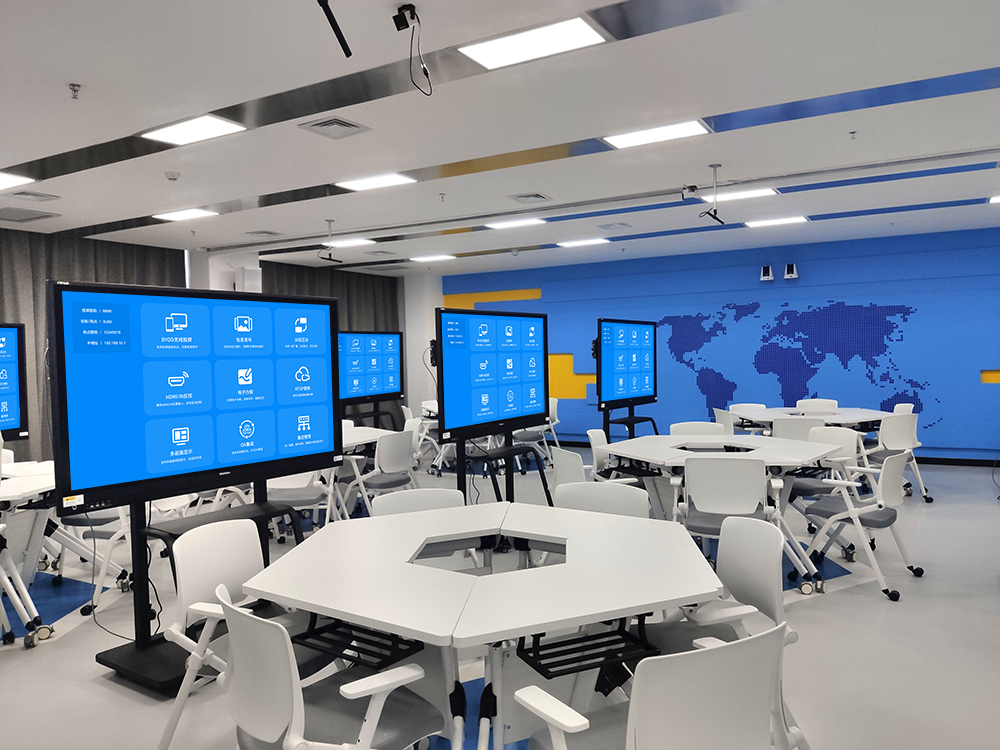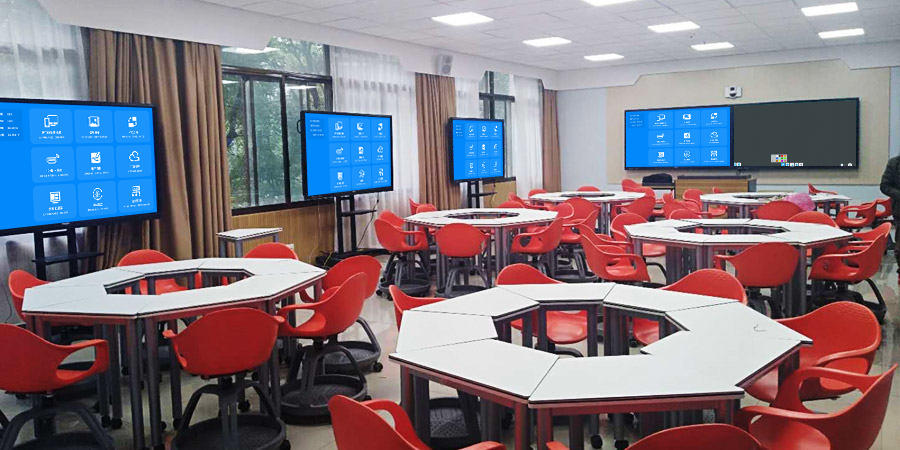Use This for Smart Classrooms: Smarter Teaching Interaction
Want to solve the problems of fragmented devices and superficial interaction in a smart classroom? This screen mirroring device makes it easy to set up a fully connected teaching environment! It’s compatible with smart boards, student tablets, and teacher devices. It supports precise lesson plan pushing, flexible result display, and real-time data synchronization. It works for smart classrooms from elementary to college, letting technology truly serve teaching.
3 Steps to Activate a Smart Classroom: A Quick Start for Teachers and Students
There’s no need to change the classroom system. You can get it working with a few simple steps:
- Automatic Device Networking: Plug the receiver into the smart board and the transmitter into the teacher’s computer. Student tablets and the classroom’s secondary screens will connect to the campus LAN. The mirroring device will automatically identify the device type and organize them by “teacher device – student device – display device,” completing the connection in 10 seconds.
- Smart Permission Allocation: A teacher can tap to turn on “Smart Teaching Mode” on their device, which will automatically give them “primary permissions” (lesson plan pushing, rhythm control). Students can log in with their smart campus account to get “interactive permissions” (submitting results, annotating, asking questions). The permissions are synchronized with the campus system.
- Start Collaborative Teaching: Tap the “Smart Classroom Button” on the mirroring device. The teacher device, student devices, and display devices will instantly be linked. Lesson plans, annotations, and data will flow in real time, and the whole process takes less than 1 minute.

Core Advantages: A Great Fit for Smart Teaching Needs
Lesson Plan Pushing: Precise and Controlled
- Tiered Pushing: A teacher can group students by ability and use the mirroring device to push different lesson plans to each group (basic groups focus on concept explanations, advanced groups focus on practice questions). The smart board will simultaneously display the group pushing status, making it easier to teach to each student’s needs.
- Multi-Media Integration: When pushing a 3D teaching model, the mirroring device automatically optimizes it to work with the smart board’s touch function, so the teacher can directly drag and rotate the model to explain it. When playing an experimental video, it supports slow motion and freezing frames. A teacher can also use the smart board to annotate key steps, making abstract knowledge concrete.
- Offline Synchronization: A teacher can pre-push lesson plans to student tablets before class, so they can access them even if there’s no internet. After class, classroom annotations and supplemental materials will automatically be synchronized to student devices, making it easier for them to review.
Interactive Feedback: Real-Time and Targeted
- Instant Result Mirroring: After a student finishes a question or draws a mind map on their tablet, they can tap “Submit to Display.” Their work will be synchronized to the group’s secondary screen and the teacher’s device with the mirroring device. The teacher can select excellent work and push it to the smart board. When the class is critiquing it, the teacher can directly annotate and edit it on the board, so the feedback is more timely.
- Dynamic Data Visualization: Student performance and participation frequency are synchronized to the teacher’s device in real time with the mirroring device. They are automatically generated into a bar chart or a line chart and pushed to the smart board. The teacher can get a clear picture of how students are doing and adjust the lesson’s pace.
- Unlimited Remote Interaction: A student learning at home can connect to the mirroring device with their tablet and participate in class questions and result displays in real time, interacting with the students in the classroom at the same time. No one is left out of the smart classroom.
Resource Synergy: Efficient and Convenient
- Cross-Device Access: While teaching at the smart board, a teacher can use the mirroring device to directly access supplemental materials from their computer or case studies from their tablet. There’s no need to switch devices, which makes the lesson flow more smoothly.
- Quick Access to Campus Resources: The mirroring device is compatible with the campus resource platform. A teacher can directly search for and push micro-lectures or question banks from the platform during class. There’s no need to download and store them in advance, which makes resource utilization more efficient.
- Multi-Screen Complementarity: The smart board can mirror the core content of a lesson plan, and the side screen can mirror a live feed of an experiment with the mirroring device. The two screens work together to connect theory with practice, and students will understand the concepts more deeply.
Works for All Grades: Smart Teaching Is Implemented
- Elementary and Middle School Smart Classrooms: In a math class, a teacher can push a geometry model to the smart board. A student can use a tablet to drag the model to prove a theorem, and the results will be mirrored in real time. In a Chinese class, a teacher can push a recording of a lesson to the classroom speaker and annotate key words and sentences on the board. A student’s listening, speaking, reading, and writing skills will all improve at the same time.
- Vocational School Smart Practical Training: In a practical training class for auto repair or nursing, a teacher can use the mirroring device to push a video of a device being taken apart or an operating standard to the smart board. When students are doing a hands-on exercise, they can take a photo of the details with their tablet and upload it. The teacher can provide guidance by annotating remotely without having to check each station, which boosts the efficiency of practical training by 40%.
- College Smart Discussions: In a professional class, when a group is discussing a topic, they can use the mirroring device to push their research report to the group’s secondary screen. After they get feedback from their peers, they can push it to the smart board. A teacher can use the mirroring device to push an academic paper and add their own views in real time, making an in-depth discussion more efficient.
Secure and Stable: Peace of Mind for Campus Use
- Strict Permission Control: It works with the campus ID card system, so only the teacher and students in the class can access the mirroring system. External devices can’t connect, which protects the class order.
- Stable Transmission: It uses dual-band transmission technology, so when multiple devices are interacting at the same time, latency is less than 15ms, and the disconnection rate is less than 0.1%. A public class or a live broadcast won’t be interrupted.
- Convenient Maintenance: The school’s unified management platform can be used to batch configure device parameters and check usage data. It also has automatic fault alarms, which lowers maintenance costs. The transmission is encrypted from start to finish, so teaching data is safe.
Using this screen mirroring device to create a smart classroom makes device connections smoother, teacher-student interaction more in-depth, and teaching management more efficient. It truly activates the value of smart teaching and helps with the digital upgrade of education.